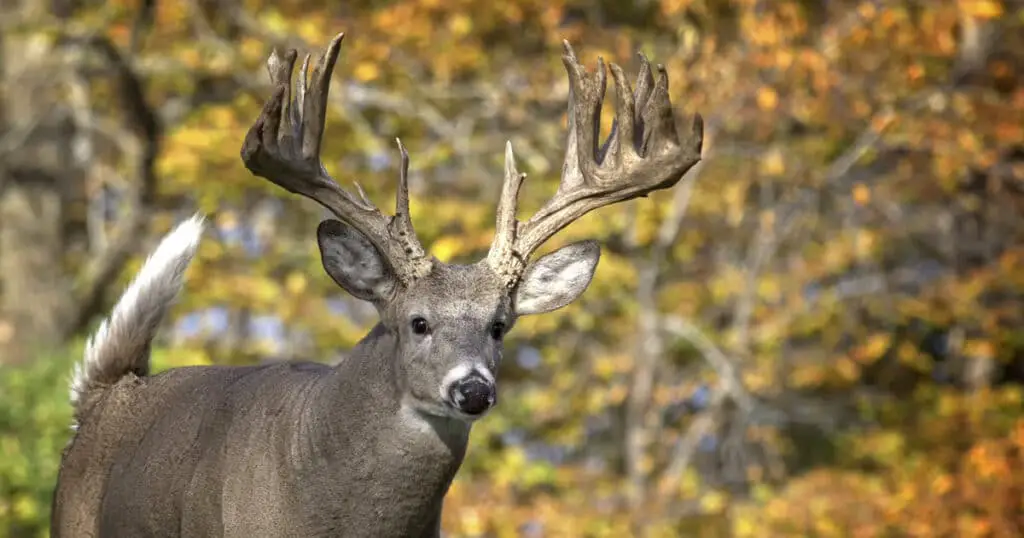There are a number of different types of deer out there, and the terminology used to reference different deer, even among animals in the same species can get confusing. Deer terminology goes beyond just different species like white-tailed deer and mule deer. In fact, it even goes beyond buck and doe. In today’s article we’ll answer the question What is a brow tine deer? with facts about the unique antler structure of deer that fall within this classification.
A brow tine deer is a deer that has a brow tine on its antlers. Brow tines normally occur in mature bucks, but there are some bucks who won’t ever grow brow tines.
Let’s take a closer look at what a brow tine is and why it does or does not occur. We’ll also look at how brow tines play into deer scoring.
What is the Brow Tine on a Deer?
A brow tine is the part of a buck’s antlers. The brow tine is the part of the antler where the first set of antlers start to jut away.
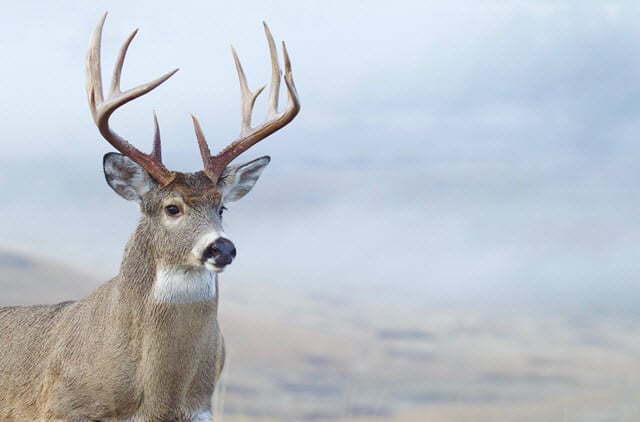
Often the brow tine grows out forward, whereas the rest of the antlers grow horizontally.
If this seems hard to distinguish from the other parts of the antlers, just remember that the brow tine comes off of the brow.
Other tines or sections of the antlers grow straight off the antler as opposed to from the brow.
As is always the case with antlers, there is a great deal of variation. No two deer will have the same set of antlers. Thus, no two brow tines will look alike.
A buck’s antlers grow throughout the course of the year. Once the mating season is over, a deer’s antlers will fall off. They will regrow the following year.
Antlers are fast-growing bones, but they don’t grow overnight. Thus, the size and shape of the brow tine will look different depending on the time of year. As a buck gets older, the brow tine and antlers will grow.
Deer Antler Terminology
Deer antlers get more complicated than brow tines. The best way to understand the different parts of an antler set is to have an antler set handy and look at the different parts.
The antlers stem up from the crown of the head. The part of the head supporting the antlers is referred to as the pedicle. The main central part of the antler is called the beam.
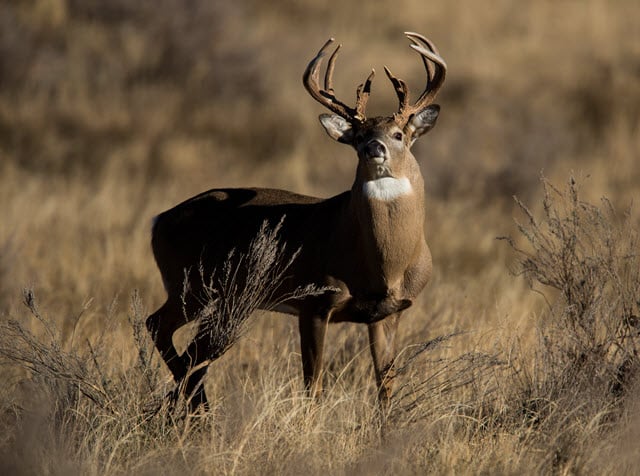
Above the brow tine, deer will have more antlers stemming from the beam. The first is referred to as the bay antler. Then came the royal antler.
If the top of the antlers divide into two parts, the end of the antlers is called a fork. If the end has multiple branches that resemble the shape of a hand, the end is called a palm instead of a fork.
The fingers of the top of the antlers are referred to as crown tine.
Not all deer will have all these antler elements. There is a great deal of variation, and there are countless irregular features that can appear.
The diversity of antlers is part of what makes collecting antlers so much fun.
Older deer usually have longer antlers than younger ones, but this isn’t always the case. Some bucks have antlers that bud early, and others won’t grow very big antlers.
What Age Do Deer Get Brow Tines?
Male deer will sometimes grow their antlers as young as four or five months old. Brow tines normally won’t appear until a deer is mature, but there is always variation.
Some deer grow antlers faster than others, just like some deer will have larger antlers and others smaller antlers.
A male white-tailed deer is considered mature at about four and a half years. If a buck doesn’t have a brow tine at this point, it probably won’t grow them later on.
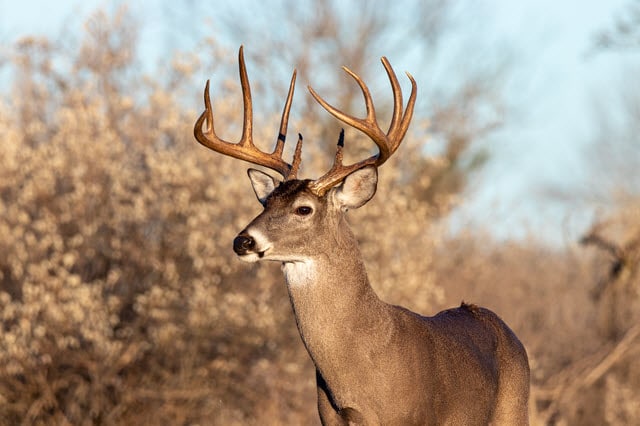
The average lifespan of a white-tailed deer is about six years.
Usually only male deer grow antlers, but female deer can sometimes grow antlers. This occurs more frequently in certain species. Female Reindeer or Caribou, for instance, have antlers which helps them dig for food under snow.
Female antlers usually won’t be as big as male antlers and can be distinguished from male antlers fairly easily. It’s less likely for female deer to have brow tines.
Why Some Deer Grow Brow Tines and Others Don’t
Much about deer antlers remains a mystery. There is a lot to learn about why and how deer antlers grow. We probably won’t ever figure out why deer grow antlers the way they do.
Nature is full of surprises, but recent population studies of white-tailed deer in Texas suggest that brow tines are a genetic trait. In other words, the offspring of a brow tine buck will probably have brow tines.
If a buck doesn’t have brow tines, his children probably won’t either.
There are exceptions, and antler growth is influenced by a variety of factors such as diet, climate, and hormones.
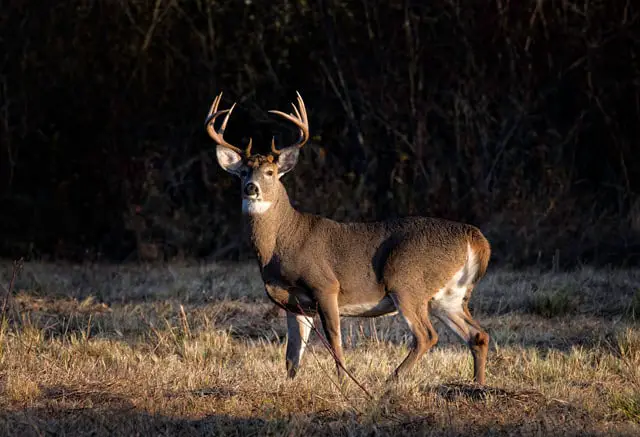
Deer antlers are some of the fastest growing bones on the planet. Growing bones requires an abundance of calcium and protein.
If a deer’s diet is deficient, it will have trouble growing antlers. Antler growth requires a substantial amount of energy, so if a deer is worn out, it will have trouble growing antlers.
Hunters love brow tines because they look more impressive on an antler rack. If a certain population of deer is lacking brow tines, hunters will try and cull the non-brow tine bucks so that they won’t mate.
This ensures that future generations will have brow tines.
However, just because a deer doesn’t have brow tines doesn’t mean the deer is necessarily unhealthy. There is nothing wrong with a buck that doesn’t develop brow tines.
Scoring Deer: Do You Count the Brow Tines on a Deer?
Whether or not to score brow tines on when scoring deer antlers is a personal decision. Some hunters will count them, whereas others count it as cheating. It’s up to you which you pick.
If you’re competing with your friends for the best antlers, make sure you have a good scoring system and know whether or not brow tines are going to count.
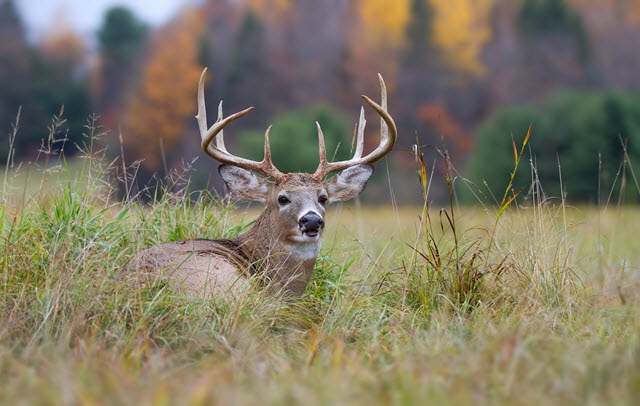
For standard registration purposes, a brow tine is recorded as a G-1. There is an entire scoring system for other irregular antler traits and abnormalities.
To measure antlers for scoring, all you need is a measuring steel tape and some string. Before scoring the antlers, make sure they are completely dry and clean. Otherwise your measurements could be messed up.
Brow Tines: In Conclusion
Brow tines can be the highlight of an impressive antler set. They are one of the most fascinating and complex features when it comes to antlers.
There is still a lot to learn about antler growth, particularly when it comes to brow tines, but hopefully this has helped you understand what brow tines are and why they are so exciting.

